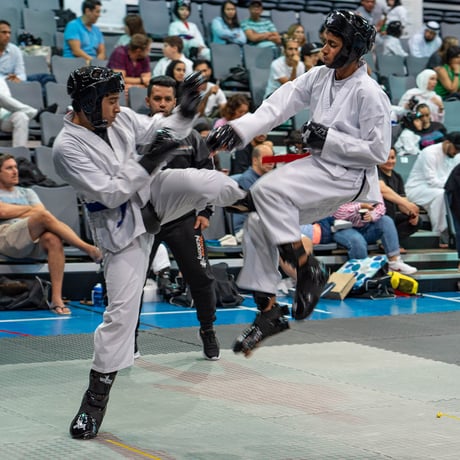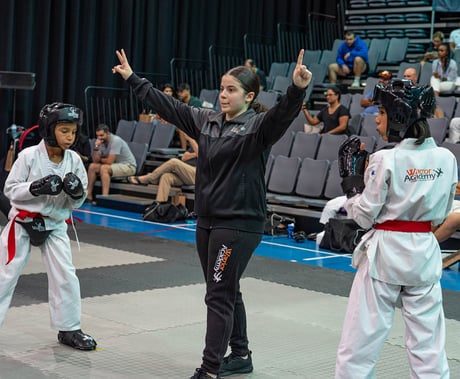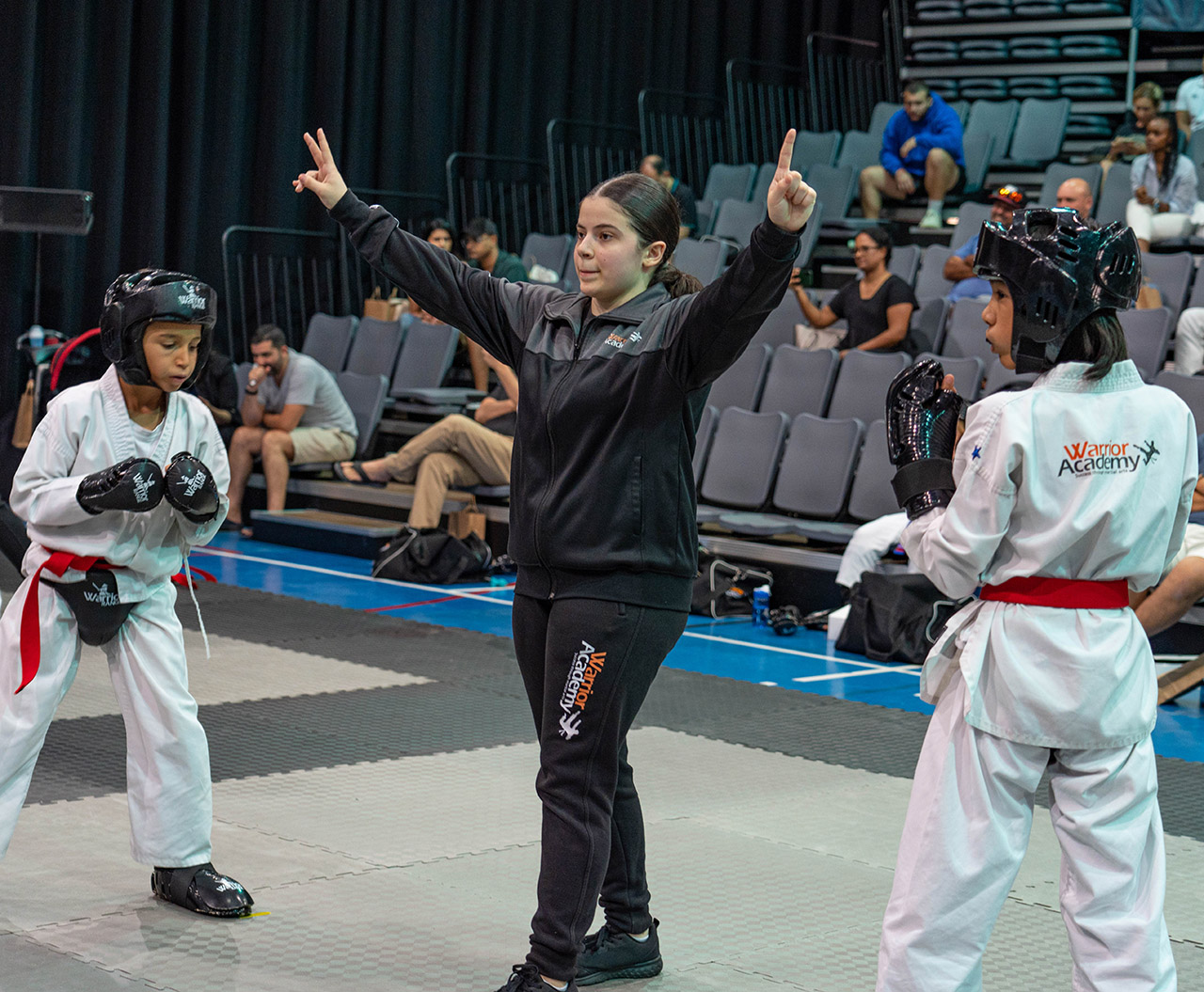Introduction to Olympic Taekwondo
Taekwondo, a martial art that seamlessly merges ancient tradition with modern athleticism, has etched its name in the annals of Olympic history. The journey of Olympic Taekwondo from its traditional Korean roots to the grand stage of the Summer Olympics is a story of perseverance, adaptation, and global appeal. Its inclusion in the Olympics not only signified a monumental achievement for Taekwondo but also marked a new era for martial arts in the global sports arena.
The elegance of Taekwondo lies in its combination of explosive power and graceful poise, characteristics that have captivated a global audience. It is more than a sport; it is a discipline that teaches respect, patience, and perseverance. When Taekwondo made its debut as a demonstration sport in the 1988 Seoul Olympics, it was a moment of pride and cultural significance for Korea. This marked the beginning of Taekwondo's journey in transcending cultural boundaries and becoming a sport beloved by athletes worldwide.
In the years following its Olympic debut, Taekwondo evolved significantly, both in technique and in the rules governing its practice in the Olympic context. This evolution reflects the sport's ongoing commitment to fairness, athlete safety, and spectator engagement. As Olympic Taekwondo gained popularity, it began attracting athletes from diverse backgrounds, each bringing their unique style and strategy to the mat. This diversity has been instrumental in enriching the sport, making it not just a competition, but a global celebration of cultural exchange and athletic excellence.
Taekwondo's path to Olympic glory is a testament to the sport's universal appeal and its ability to adapt and thrive. It represents a perfect blend of physical prowess and strategic thinking, making it a fascinating spectacle for the Olympics. As we delve deeper into the world of Olympic Taekwondo, we uncover the layers that make this martial art an enduring and captivating component of the Olympic Games.
The Evolution of Taekwondo in the Olympic Games
 The story of Taekwondo in the Olympics is one of dramatic evolution, marked by a journey from humble beginnings to a globally recognized sport. This evolution reflects the adaptability and resilience of Taekwondo, embodying the spirit of the martial art itself. The significant milestone in this journey was its introduction as a demonstration sport in the 1988 Seoul Olympics, a moment that brought Taekwondo into the international spotlight and set the stage for its future growth.
The story of Taekwondo in the Olympics is one of dramatic evolution, marked by a journey from humble beginnings to a globally recognized sport. This evolution reflects the adaptability and resilience of Taekwondo, embodying the spirit of the martial art itself. The significant milestone in this journey was its introduction as a demonstration sport in the 1988 Seoul Olympics, a moment that brought Taekwondo into the international spotlight and set the stage for its future growth.
Following its successful demonstration in Seoul, Taekwondo was again featured in the 1992 Barcelona Olympics, further consolidating its presence on the global sports stage. The defining moment came in 2000, when Taekwondo was officially included as a medal sport in the Sydney Olympics. This inclusion was not just a victory for Taekwondo practitioners but also for the entire martial arts community, as it recognized the sport's competitive nature and its appeal as a spectator sport.
Over the years, the rules and formats of Olympic Taekwondo competition have seen significant changes, aimed at enhancing the sport's fairness, safety, and appeal. The introduction of electronic scoring vests, for instance, revolutionized the way points were scored and decisions were made, reducing human error and increasing transparency. These technological advancements have made the sport more dynamic and exciting, both for athletes and audiences.
Furthermore, the inclusion of more weight categories has allowed a broader range of athletes to compete, showcasing the depth and diversity of talent in Taekwondo. This evolution has not only increased participation rates but also heightened the level of competition, making each Olympic event a display of the highest level of skill and dedication.
The evolution of Taekwondo in the Olympics mirrors the sport's journey from a national treasure of Korea to a cherished global phenomenon. It is a story of cultural exchange, technological advancement, and sporting excellence, making Taekwondo a compelling and respected part of the Olympic tradition.
Understanding Olympic Taekwondo Rules and Scoring
 Delving into the mechanics of Olympic Taekwondo, one discovers a world where precision, strategy, and agility converge. The rules and scoring system of Olympic Taekwondo are meticulously crafted, offering a blend of tradition and modernity, designed to test the mettle of the world's best martial artists. Understanding these rules is essential for appreciating the skill and finesse displayed in each match.
Delving into the mechanics of Olympic Taekwondo, one discovers a world where precision, strategy, and agility converge. The rules and scoring system of Olympic Taekwondo are meticulously crafted, offering a blend of tradition and modernity, designed to test the mettle of the world's best martial artists. Understanding these rules is essential for appreciating the skill and finesse displayed in each match.
The scoring in Olympic Taekwondo is a dynamic and intricate system. Points are awarded for valid strikes to the opponent's torso and head, with techniques varying from basic kicks to complex spinning and jumping kicks. Strikes to the torso score one point, while head kicks score three points. However, more advanced techniques, like spinning kicks, can earn additional points, incentivizing athletes to display higher levels of technical skill and daring. This scoring system not only promotes a wide range of techniques but also keeps the matches exciting and unpredictable.
The significance of Taekwondo weight classes in the Olympics cannot be overstated. The weight classes ensure that athletes compete against others of similar body size and strength, making the matches fairer and more competitive. This classification plays a crucial role in strategy formulation, as competitors must tailor their techniques and approaches to effectively counter opponents in their weight class.
The introduction of electronic scoring systems has been a game-changer in Olympic Taekwondo. Sensors in the protective gear ensure that points are awarded automatically for valid strikes, reducing human error and ensuring a greater level of fairness. This technology has also accelerated the pace of matches, making them more thrilling for spectators.
Understanding the rules and scoring of Olympic Taekwondo is crucial for both athletes and fans. It reveals the depth of strategy behind each kick and block, showcasing why Taekwondo is not just a test of physical strength, but also of mental agility and tactical acumen. As the sport continues to evolve, these rules and scoring methods will undoubtedly continue to adapt, keeping Olympic Taekwondo at the cutting edge of martial arts competition.
Training for Olympic Taekwondo
 The path to excelling in Olympic Taekwondo is rigorous and demands a unique blend of physical prowess, mental discipline, and technical mastery. Training for this elite level of competition goes beyond honing martial arts skills; it encompasses a comprehensive regimen that prepares athletes for the intense demands of Olympic competition.
The path to excelling in Olympic Taekwondo is rigorous and demands a unique blend of physical prowess, mental discipline, and technical mastery. Training for this elite level of competition goes beyond honing martial arts skills; it encompasses a comprehensive regimen that prepares athletes for the intense demands of Olympic competition.
A key component of training for Olympic Taekwondo is developing physical fitness. This involves intensive strength and conditioning programmes designed to enhance agility, speed, and endurance. Taekwondo athletes must possess explosive power for quick, impactful strikes, as well as the stamina to maintain peak performance throughout the match. Cardiovascular training, weightlifting, and plyometrics are integral parts of their fitness routine, ensuring that they can execute precise techniques with speed and power.
Equally important is the technical training, where athletes refine their kicking and sparring techniques. This aspect of training focuses on perfecting the execution of basic to advanced Taekwondo kicks, blocks, and strikes, with an emphasis on accuracy, speed, and adaptability. Sparring sessions play a crucial role, as they simulate actual combat scenarios, allowing athletes to develop their tactical thinking, reaction time, and adaptability in the ring.
Mental preparation is another crucial aspect of training for Olympic-level competition. Athletes work on developing focus, resilience, and strategic thinking. Mental conditioning often includes practices like meditation, visualization, and psychological coaching. This mental fortitude is essential for overcoming the pressures of high-stakes competition and maintaining composure in critical moments of a match.
Nutrition and recovery are also vital elements of an Olympic Taekwondo athlete's regimen. A balanced diet tailored to the athlete’s specific needs ensures optimal performance and recovery. Proper rest, including adequate sleep and active recovery techniques, is essential to prevent injuries and maintain peak physical condition.
Training for Olympic Taekwondo is a holistic process that prepares athletes for the highest level of competition. It requires dedication, discipline, and a relentless pursuit of excellence, qualities that define the spirit of Taekwondo and its representation in the Olympic arena.
Conclusion
Olympic Taekwondo represents the pinnacle of martial arts competition, showcasing a perfect amalgamation of ancient tradition and modern athleticism. Its journey from the dojangs of Korea to the global stage of the Olympics is a testament to its universal appeal and the unifying power of sport. As we have explored, the evolution of Taekwondo, its rigorous training regimens, and the intricate rules and scoring systems, we gain a deeper appreciation for this dynamic sport. Olympic Taekwondo not only challenges the physical and mental limits of its athletes but also inspires a spirit of respect, discipline, and perseverance. As the sport continues to evolve and captivate audiences worldwide, it remains a symbol of cultural exchange, sporting excellence, and the enduring spirit of the martial arts.
Frequently Asked Questions About Olympic Taekwondo
When was Taekwondo first included in the Olympics?Taekwondo made its debut as a demonstration sport in the 1988 Seoul Olympics and became an official medal sport in the 2000 Sydney Olympics.
How is scoring determined in Olympic Taekwondo?
Points are awarded for valid strikes to the opponent's torso and head. The scoring system rewards basic kicks, advanced techniques like spinning kicks, and head kicks with varying points.
What are the weight classes in Olympic Taekwondo?
Weight classes in Olympic Taekwondo are designed to ensure fair competition. They group athletes by similar body weights, and the specific categories can vary between men’s and women’s competitions.
How do athletes train for Olympic Taekwondo?
Training for Olympic Taekwondo includes physical conditioning, technical skill development, mental preparation, and strategic planning. Athletes undergo rigorous training regimens to enhance strength, speed, endurance, and technique.
What makes Olympic Taekwondo unique compared to other martial arts?
Olympic Taekwondo is distinguished by its dynamic scoring system, emphasis on high-flying kicks and speed, and the blend of traditional martial arts discipline with modern sports science.
If you would like to know which area your child needs the most support with, simply click the link below to take our Breakthrough Area Assessment.


